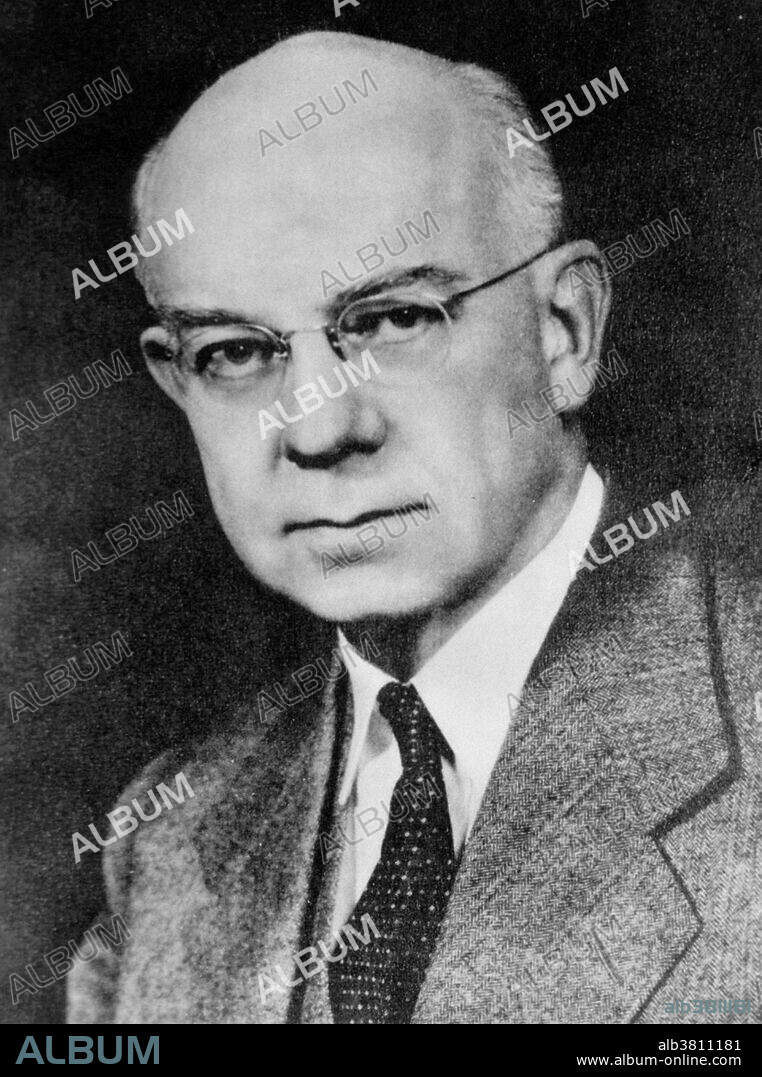alb3811181
Edward Calvin Kendall, American Chemist

|
Add to another lightbox |
|
Add to another lightbox |



Buy this image.
Select the use:

Title:
Edward Calvin Kendall, American Chemist
Caption:
Edward Calvin Kendall (1886-1972) was an American chemist. He attended Columbia University and got his PhD in 1910. He was Director of the Division of Biochemistry at the Mayo Foundation where he did his research. Kendall made several notable contributions to biochemistry and medicine. His most notable discovery was the isolation of thyroxine. Kendall was also involved with the isolation of glutathione and determining its structure. He then isolated several steroids from the adrenal gland cortex, one of which was initially called Compound E. Working with Mayo Clinic physician Philip Showalter Hench, Compound E was used to treat rheumatoid arthritis. The compound was eventually named cortisone. In 1950, Kendall and Hench, along with Swiss chemist Tadeus Reichstein were awarded the 1950 Nobel Prize in Physiology or Medicine for "their discoveries relating to the hormones of the adrenal cortex, their structure and biological effects." Kendall's career at Mayo ended in 1951, when he reached mandatory retirement age. He lived to the age of 86.
Category:
Science: Personalities
Credit:
Album / NLM/Science Source
Releases:
Image size:
2700 x 3628 px | 28.0 MB
Print size:
22.9 x 30.7 cm | 9.0 x 12.1 in (300 dpi)
Keywords:
1886 • 1950 • 1950S • 1951 • 1972 • 20 20TH XX XXTH TWENTIETH CENTURY • 20 XX TWENTIETH CENTURY • 20TH CENTURY • 20TH • ADRENAL CORTEX • ADRENAL GLAND CORTEX • AMERICA • AMERICAN • BIOCHEMIST • BIOCHEMISTRY • BIOLOGICAL EFFECTS • BW • CELEBRITIES • CELEBRITY • CHEMIST • CHEMISTRY • COMPOUND E • CORTISONE • DISCOVERER • E. C. KENDALL • E. KENDALL • EDWARD C. KENDALL • EDWARD CALVIN KENDALL • EDWARD KENDALL • EXPLORER • FAMOUS PEOPLE • FAMOUS • FIGURE • GLUTATHIONE • HENCH • HISTORIC • HISTORICAL • HISTORY • IMPORTANT • ISOLATED STEROIDS • ISOLATION OF GLUTATHIONE • ISOLATION OF THYROXINE • KENDALL • MALE • MAN • MEDICAL • MEDICINAL • MEN • NOBEL LAUREATE • NOBEL PRIZE LAUREATE • NOBEL PRIZE RECIPIENT • NOBEL PRIZE WINNER • NOBEL PRIZE • NOBEL RECIPIENT • NOBEL WINNER • NOBEL • NOBELIST • NOTABLE • P. HENCH • P. S. HENCH • PEOPLE • PERSON • PERSONALITIES • PERSONALITY • PHILIP HENCH • PHILIP S. HENCH • PHILIP SHOWALTER HENCH • PHOTO • PHOTOGRAPH • PORTAIT • PORTRAIT • POTRAIT • RESEARCH • RESEARCHER (MALE) • RESEARCHER • RHEUMATISM • RHEUMATOID ARTHRITIS • SCIENCE • SCIENCE: PERSONALITIES • STRUCTURE OF GLUTATHIONE • THYROXINE • TWENTIETH CENTURY • UNITED STATES • US • USA • WELL-KNOWN


 Pinterest
Pinterest Twitter
Twitter Facebook
Facebook Copy link
Copy link Email
Email
